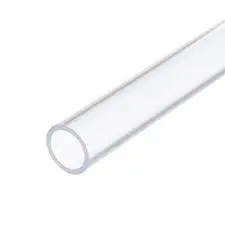pro . 04, 2024 18:27 Back to list
hdpe drainage pipe
HDPE Drainage Pipe An Overview of Benefits and Applications
High-Density Polyethylene (HDPE) drainage pipe is a revolutionary solution in the realm of civil engineering and construction. Known for its robustness, flexibility, and longevity, HDPE piping plays a crucial role in effective water management systems. This article delves into the characteristics, advantages, and various applications of HDPE drainage pipes, emphasizing their increasing relevance in modern infrastructure.
Understanding HDPE
HDPE is a type of thermoplastic made from petroleum. Its unique molecular structure gives it high tensile strength, making it resistant to impact and stress. The production of HDPE pipes involves a process called extrusion, where melted plastic is formed into long continuous pipes. This method ensures uniformity and high performance in drainage applications. Furthermore, HDPE's chemical resistance means that it can safely transport a variety of substances, from stormwater to raw sewage, without the risk of corrosion or degradation.
Key Advantages of HDPE Drainage Pipes
1. Durability and Longevity One of the most significant benefits of HDPE drainage pipes is their impressive lifespan. They can last more than 50 years under proper conditions, significantly reducing replacement costs over time. Their high resistance to chemical attack ensures that they maintain integrity even in harsh environmental conditions.
2. Lightweight and Easy to Handle HDPE pipes are considerably lighter than traditional materials like concrete or steel. This characteristic simplifies transportation and installation, reducing labor costs and the time required for construction. Moreover, the flexibility of HDPE allows it to adapt to various landscapes and terrain, making installation in challenging conditions more manageable.
3. Resistance to Abrasion HDPE pipes exhibit excellent resistance to abrasion, which is crucial in drainage applications where sediment-laden water might cause wear and tear. This property allows for reliable performance in environments where conventional pipes might fail.
4. Low Friction Coefficient The smooth interior surface of HDPE pipes contributes to a lower friction coefficient, which enhances flow rates and reduces energy consumption in pumping systems. Improved flow can decrease the likelihood of blockages, ensuring that drainage systems function efficiently.
5. Environmentally Friendly HDPE is 100% recyclable, making it an eco-friendly choice for construction and infrastructure projects. Choosing HDPE over traditional materials contributes to sustainability by minimizing environmental impact during the lifespan of the product.
hdpe drainage pipe

Applications of HDPE Drainage Pipes
HDPE drainage pipes are versatile and cater to a wide range of applications
1. Stormwater Management These pipes are extensively used in stormwater drainage systems to efficiently channel rainwater away from urban areas, preventing flooding and waterlogging.
2. Septic Systems HDPE pipes are ideal for septic systems due to their durability and resistance to corrosive substances. They help ensure that wastewater is effectively transported and treated, protecting groundwater from contamination.
3. Agricultural Drainage In agricultural settings, HDPE drainage pipes facilitate the removal of excess water from fields, allowing farmers to enhance crop production and soil health.
4. Mining and Dewatering Applications The mining industry often relies on HDPE drainage solutions to manage water in and around mines, aiding in safe operations and environmental preservation.
5. Municipal Applications Many cities have adopted HDPE piping for their sewage and waste management systems. Its effectiveness in heavy-duty applications has made it a standard choice for municipalities seeking durable solutions.
Conclusion
As urban areas continue to grow, the demand for efficient drainage systems is becoming increasingly essential. HDPE drainage pipes offer a combination of durability, cost-effectiveness, and environmental sustainability that positions them as a preferred choice in modern infrastructure. With their wide-ranging applications and numerous benefits, it is clear that HDPE pipes are not just a technological advancement but a necessary development in meeting the challenges of contemporary water management. As we move forward, the adoption of HDPE drainage solutions will play a pivotal role in creating resilient and sustainable urban environments.
-
Durable PVC-M Water Supply Pipes | 60-Year Life
NewsAug.04,2025
-
Premium HDPE Water Supply Pipes: Durable & Leak-Proof
NewsAug.03,2025
-
Premium PVC-M Water Supply Pipe - Durable & Efficient
NewsAug.02,2025
-
Premium PP Welding Rod: GPT-4 Turbo Enhanced
NewsAug.01,2025
-
HDPE Drainage & Irrigation Pipe - Durable, Efficient Solutions
NewsAug.01,2025
-
Premium PVC Transparent Pipe: Durable & Clear Solutions
NewsJul.31,2025

